A WUCAI 'DESCENDING GEESE' SLEEVE VASEShunzhi
The tall cylindrical vessel decorated in vibrant enamels and underglaze blue around the exterior with a continuous scene of lotus blossoms issuing undulating leaves, a kingfisher in flight with another perched on a branch, two geese on the bank gaze above at a goose in flight about to descend, while another swims in the pond, the neck with further flowering fruits and insects. 44.8cm (17 2/3in) high. Footnotes清順治 五彩芙蓉禽戲圖瓶
Provenance: Berwald Oriental Art Ltd., London, 17 May 2013
來源:伦敦古董商Berwald Oriental Art Ltd.,2013年5月17日
Geese descending is a theme which has strong poetic associations with Autumn and has been extolled by both painters and musicians alike in the well-known song for the guqin 'Wild Geese Descending on the Sandbank' (平沙落雁). This theme attained renown within Chinese literary and artistic circles during the Song period and continued from then on. See also a painting of geese descending by Bian Shoumin (1683-1752), in the Museum of Fine Arts, Houston (acc.no.90.513), and the painting 'Wild Geese and Hibiscus' by Bian Wenjin (ca.1356-1428), in The Shanghai Museum, illustrated by Hou-mei Sung, Decoded Messages: The Symbolic Language of Chinese Animal Painting, New Haven, 2009, p.68. The latter painting (though with five birds) shows wild geese on a river shore in the four aspects of flying, calling, sleeping and eating, a traditional grouping. Geese over time had many different meanings from orderliness in flight, to their ability to come and go as they pleased, to their apparent busyness and friendship.
During the Yuan dynasty, wild geese appear to have symbolised the self-enforced leisure and freedom of retired Han Chinese scholars, indignant at their treatment under Mongolian rule. It could be perhaps, that Han Chinese scholars felt the same with impending foreign Manchu rule. It is likely that the brushpot's design was based on the woodblock printed book Tuhui zongyi (圖繪宗彝), which also shows geese descending, and was published in 1607.
See a similar wucai cylindrical vase, circa 1640, with birds and lotus, which was sold at Bonhams London, 6 November 2014, lot 47. See also a rare wucai sleeve vase, Shunzhi, which was sold at Christie's New York, 16 March 2015, lot 3547. See also a blue and white ovoid jar and cover, with similar design of geese, Chongzhen, which was sold at Bonhams London, 3 November 2022, lot 7.
A WUCAI 'DESCENDING GEESE' SLEEVE VASEShunzhi
The tall cylindrical vessel decorated in vibrant enamels and underglaze blue around the exterior with a continuous scene of lotus blossoms issuing undulating leaves, a kingfisher in flight with another perched on a branch, two geese on the bank gaze above at a goose in flight about to descend, while another swims in the pond, the neck with further flowering fruits and insects. 44.8cm (17 2/3in) high. Footnotes清順治 五彩芙蓉禽戲圖瓶
Provenance: Berwald Oriental Art Ltd., London, 17 May 2013
來源:伦敦古董商Berwald Oriental Art Ltd.,2013年5月17日
Geese descending is a theme which has strong poetic associations with Autumn and has been extolled by both painters and musicians alike in the well-known song for the guqin 'Wild Geese Descending on the Sandbank' (平沙落雁). This theme attained renown within Chinese literary and artistic circles during the Song period and continued from then on. See also a painting of geese descending by Bian Shoumin (1683-1752), in the Museum of Fine Arts, Houston (acc.no.90.513), and the painting 'Wild Geese and Hibiscus' by Bian Wenjin (ca.1356-1428), in The Shanghai Museum, illustrated by Hou-mei Sung, Decoded Messages: The Symbolic Language of Chinese Animal Painting, New Haven, 2009, p.68. The latter painting (though with five birds) shows wild geese on a river shore in the four aspects of flying, calling, sleeping and eating, a traditional grouping. Geese over time had many different meanings from orderliness in flight, to their ability to come and go as they pleased, to their apparent busyness and friendship.
During the Yuan dynasty, wild geese appear to have symbolised the self-enforced leisure and freedom of retired Han Chinese scholars, indignant at their treatment under Mongolian rule. It could be perhaps, that Han Chinese scholars felt the same with impending foreign Manchu rule. It is likely that the brushpot's design was based on the woodblock printed book Tuhui zongyi (圖繪宗彝), which also shows geese descending, and was published in 1607.
See a similar wucai cylindrical vase, circa 1640, with birds and lotus, which was sold at Bonhams London, 6 November 2014, lot 47. See also a rare wucai sleeve vase, Shunzhi, which was sold at Christie's New York, 16 March 2015, lot 3547. See also a blue and white ovoid jar and cover, with similar design of geese, Chongzhen, which was sold at Bonhams London, 3 November 2022, lot 7.
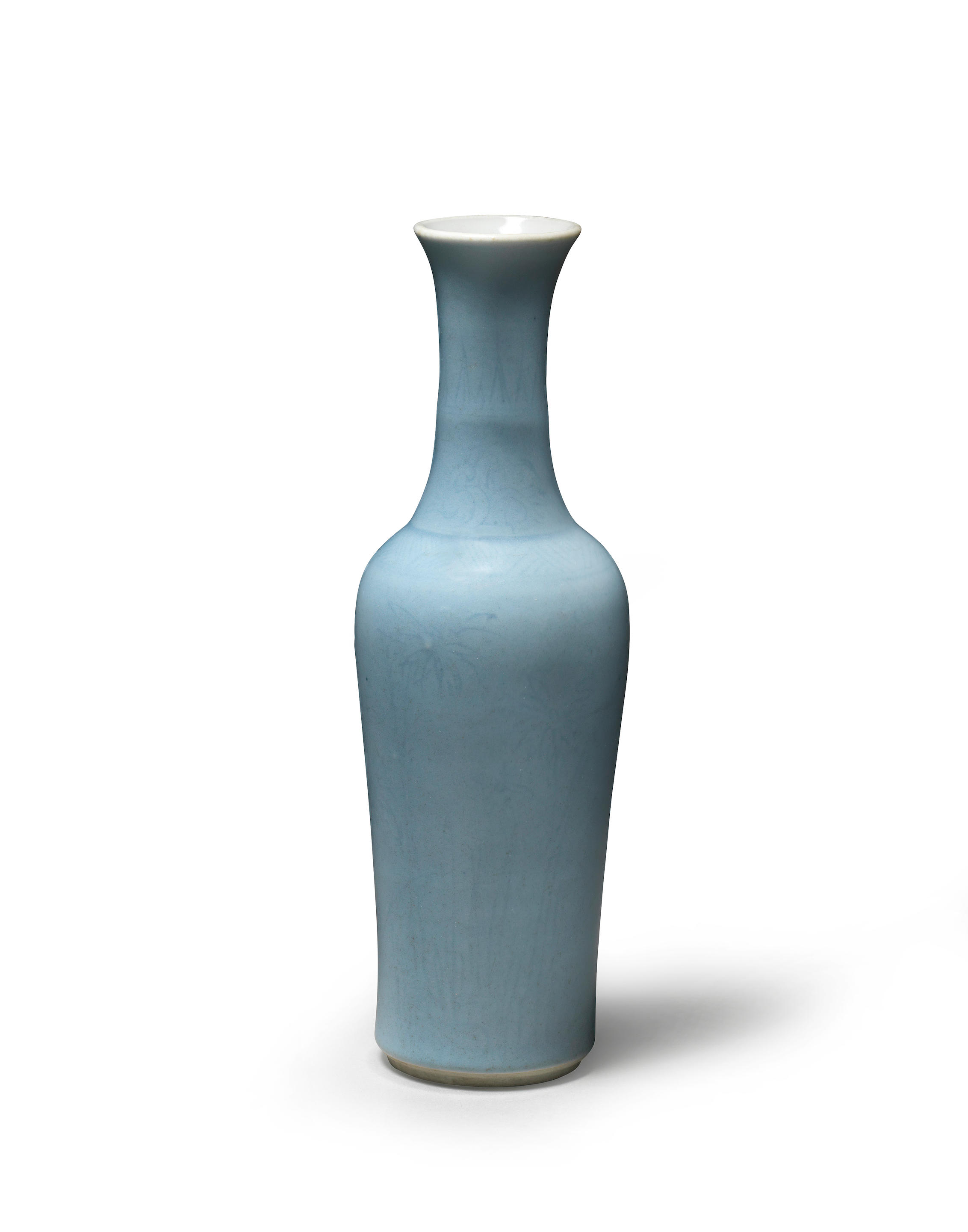
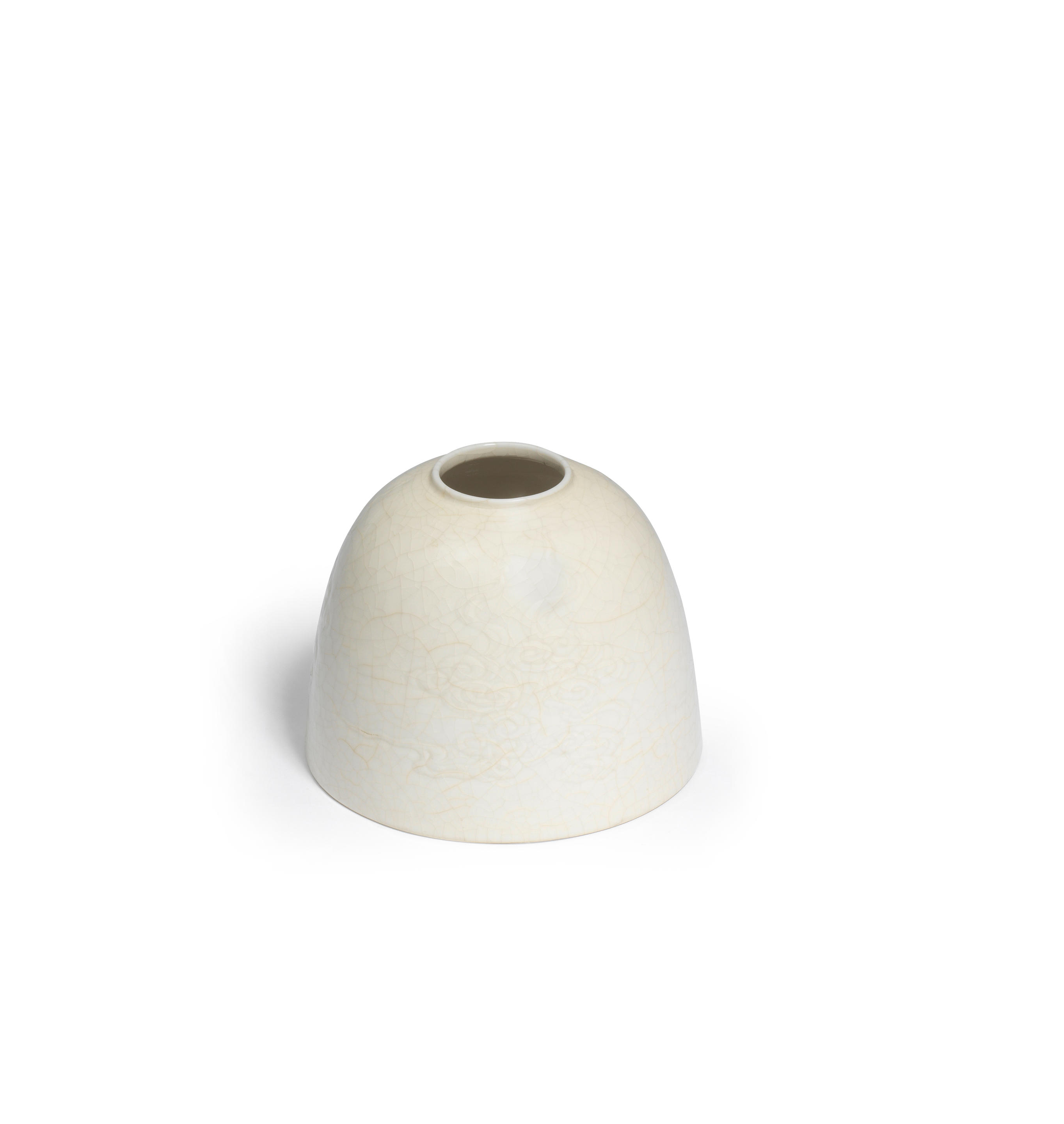
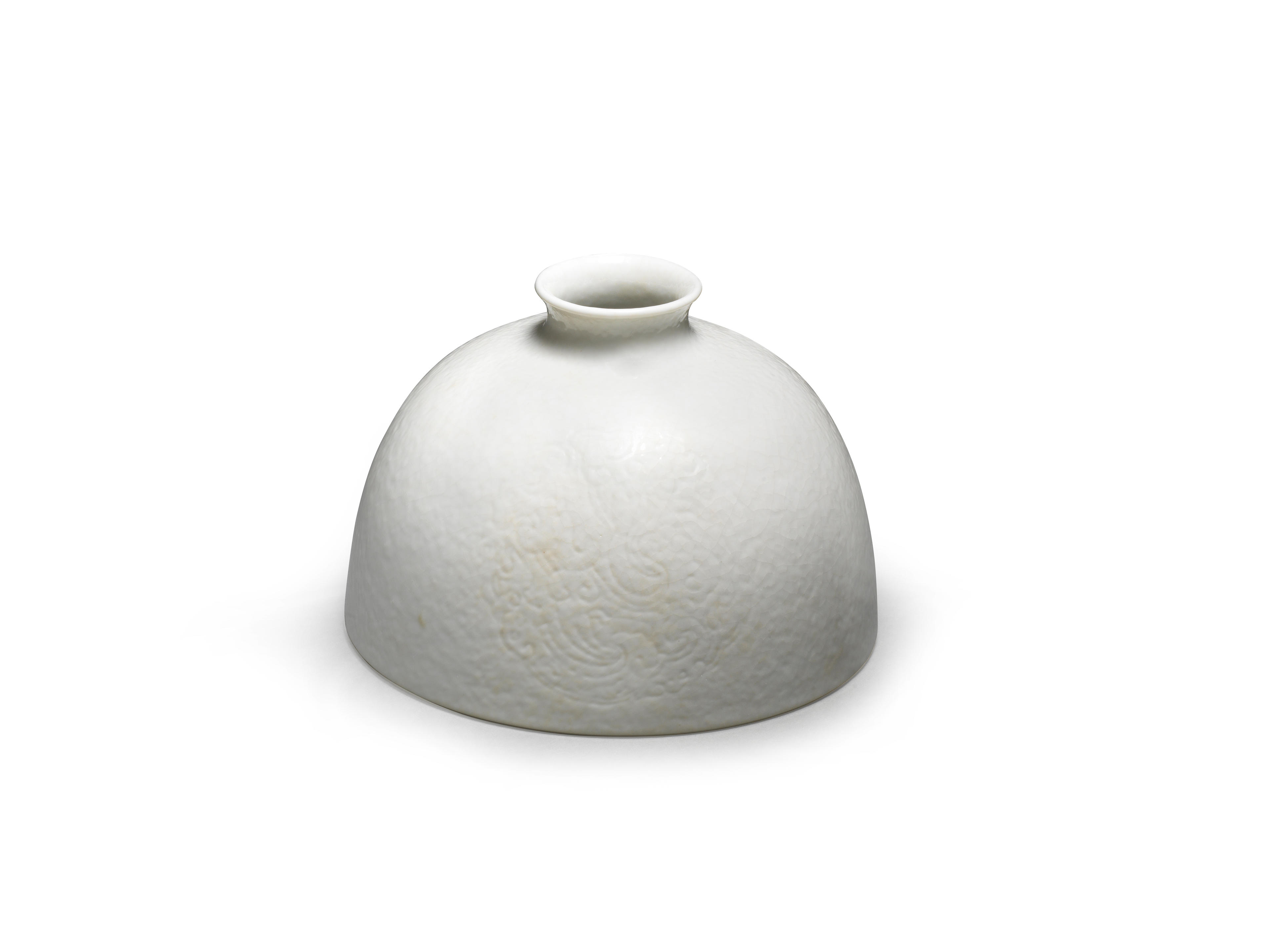

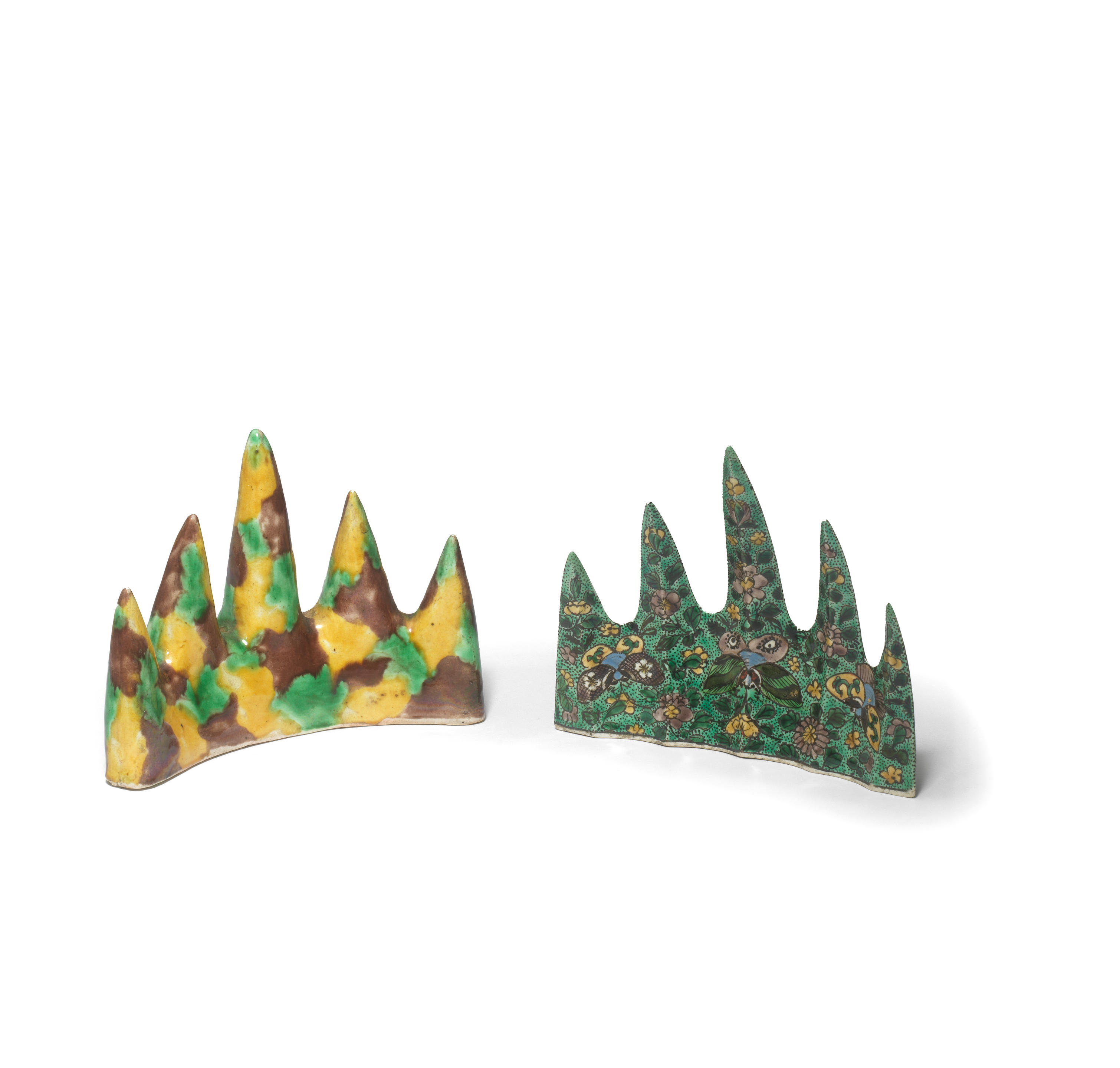
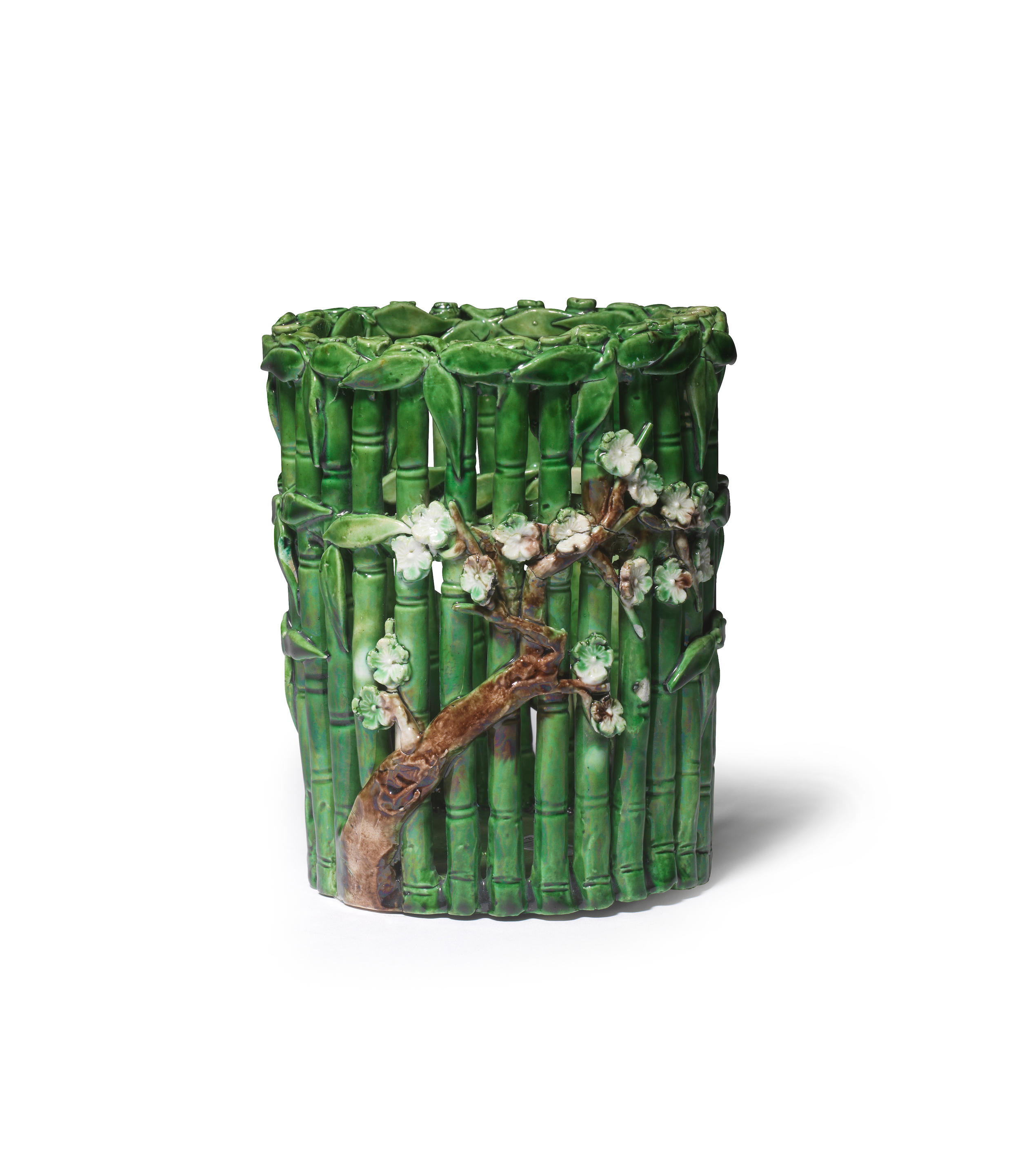


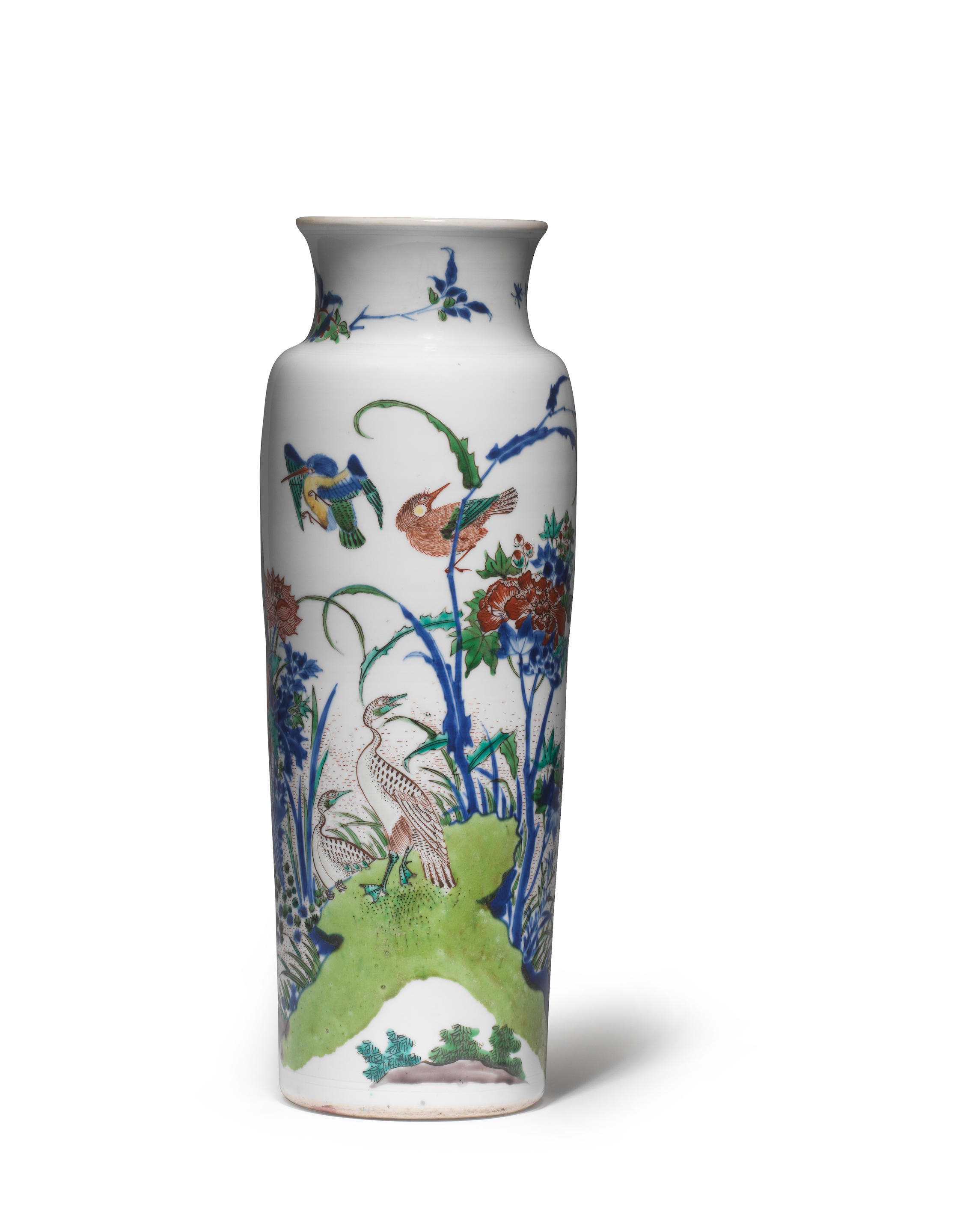
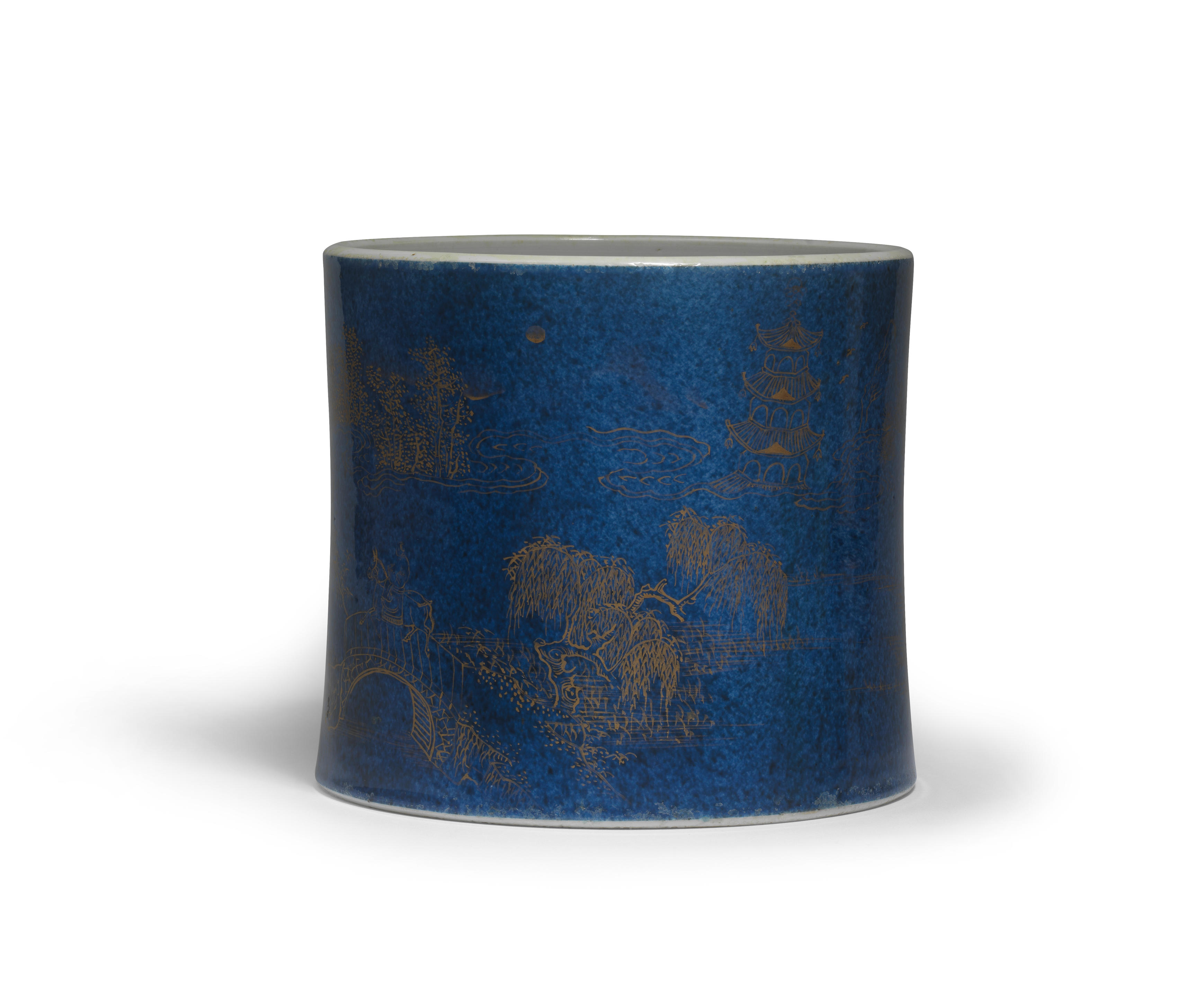
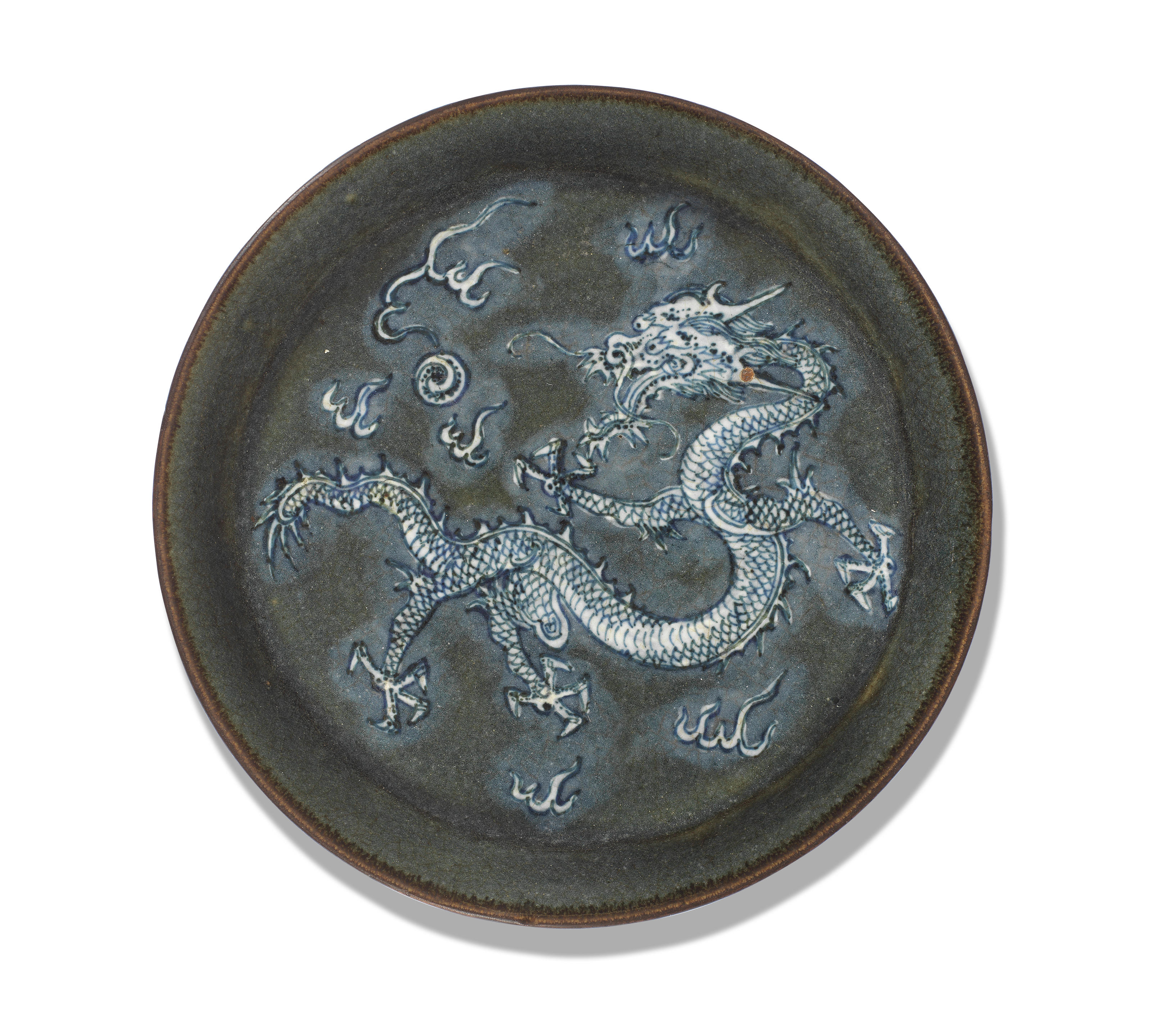
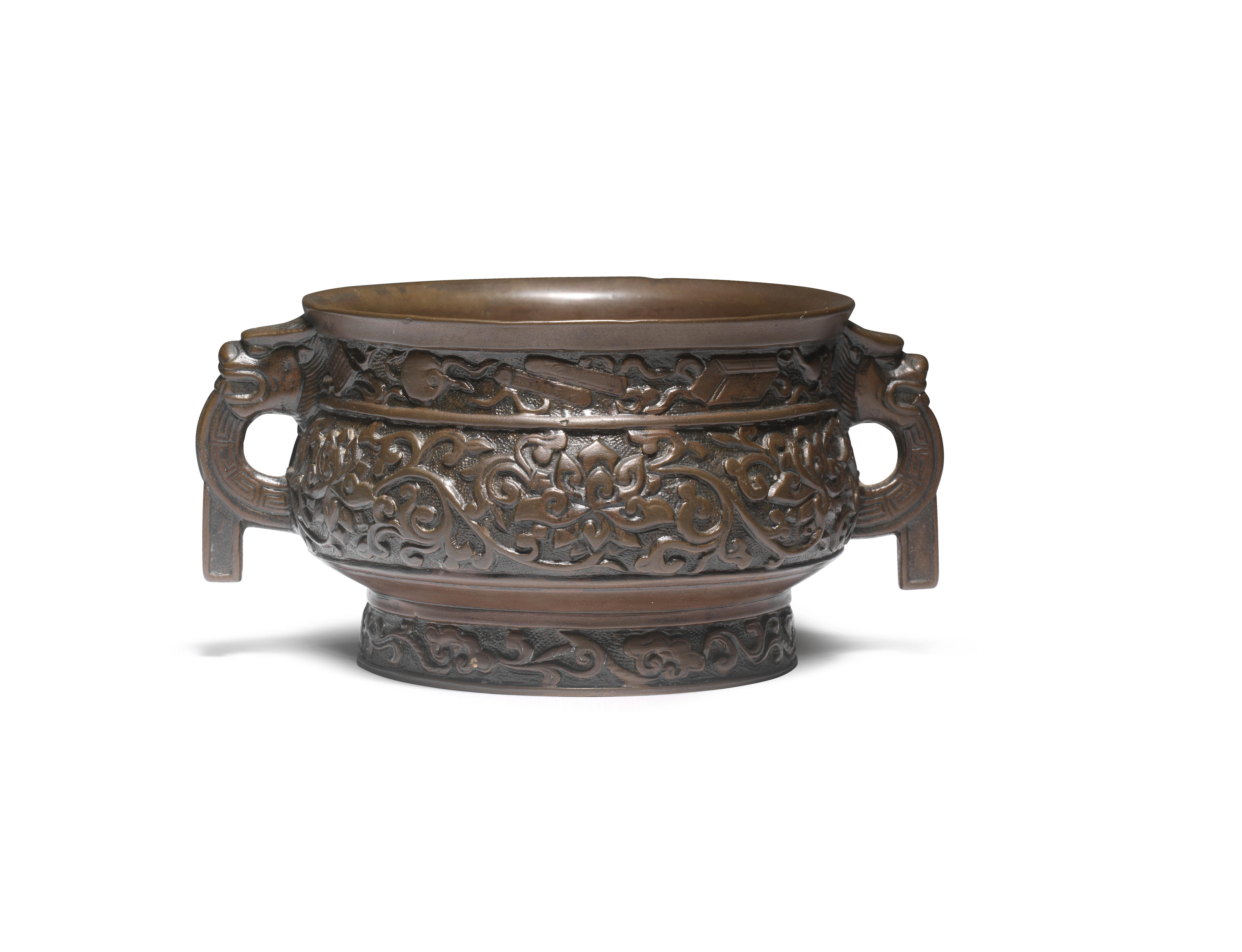


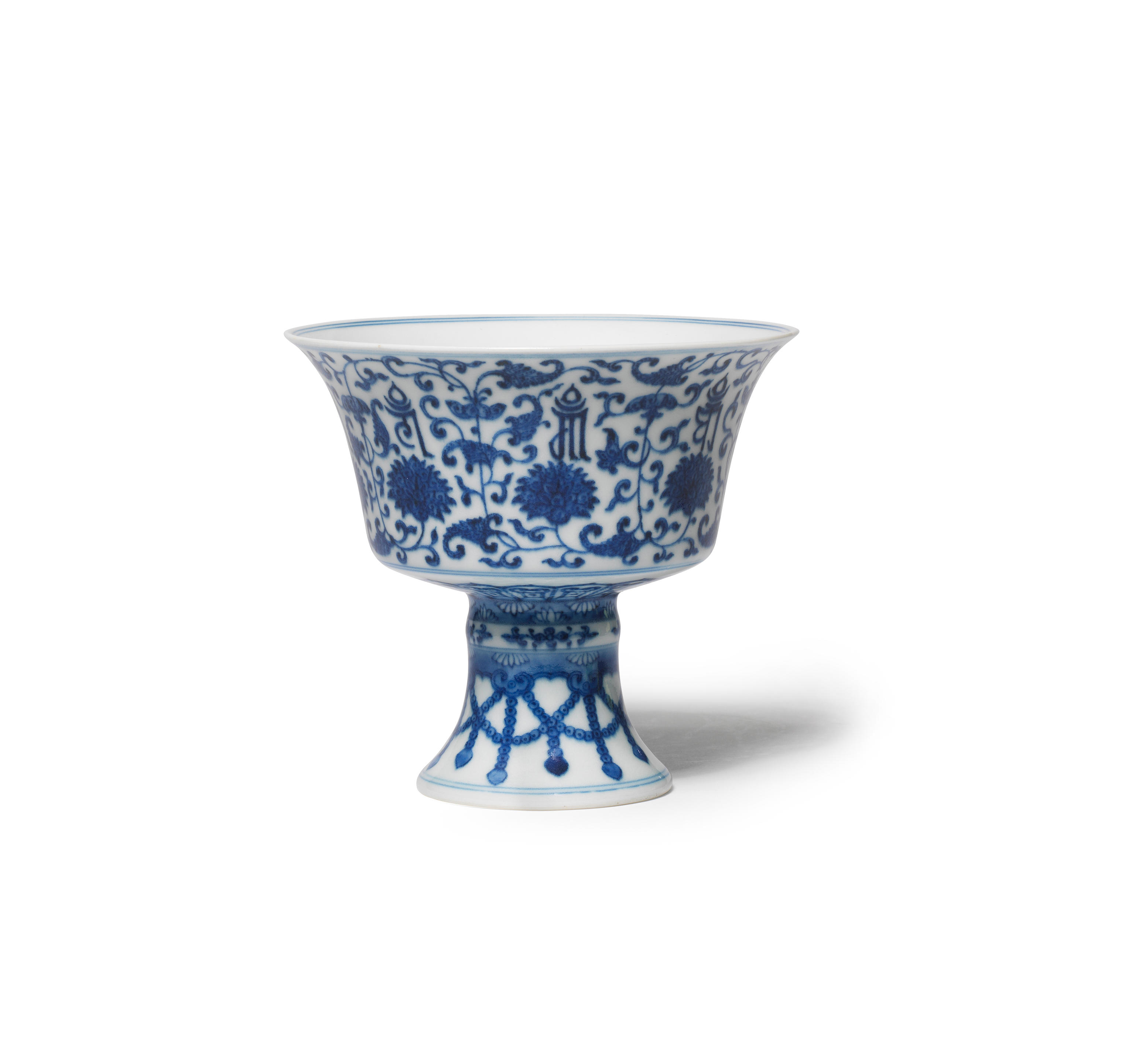
Testen Sie LotSearch und seine Premium-Features 7 Tage - ohne Kosten!
Lassen Sie sich automatisch über neue Objekte in kommenden Auktionen benachrichtigen.
Suchauftrag anlegen